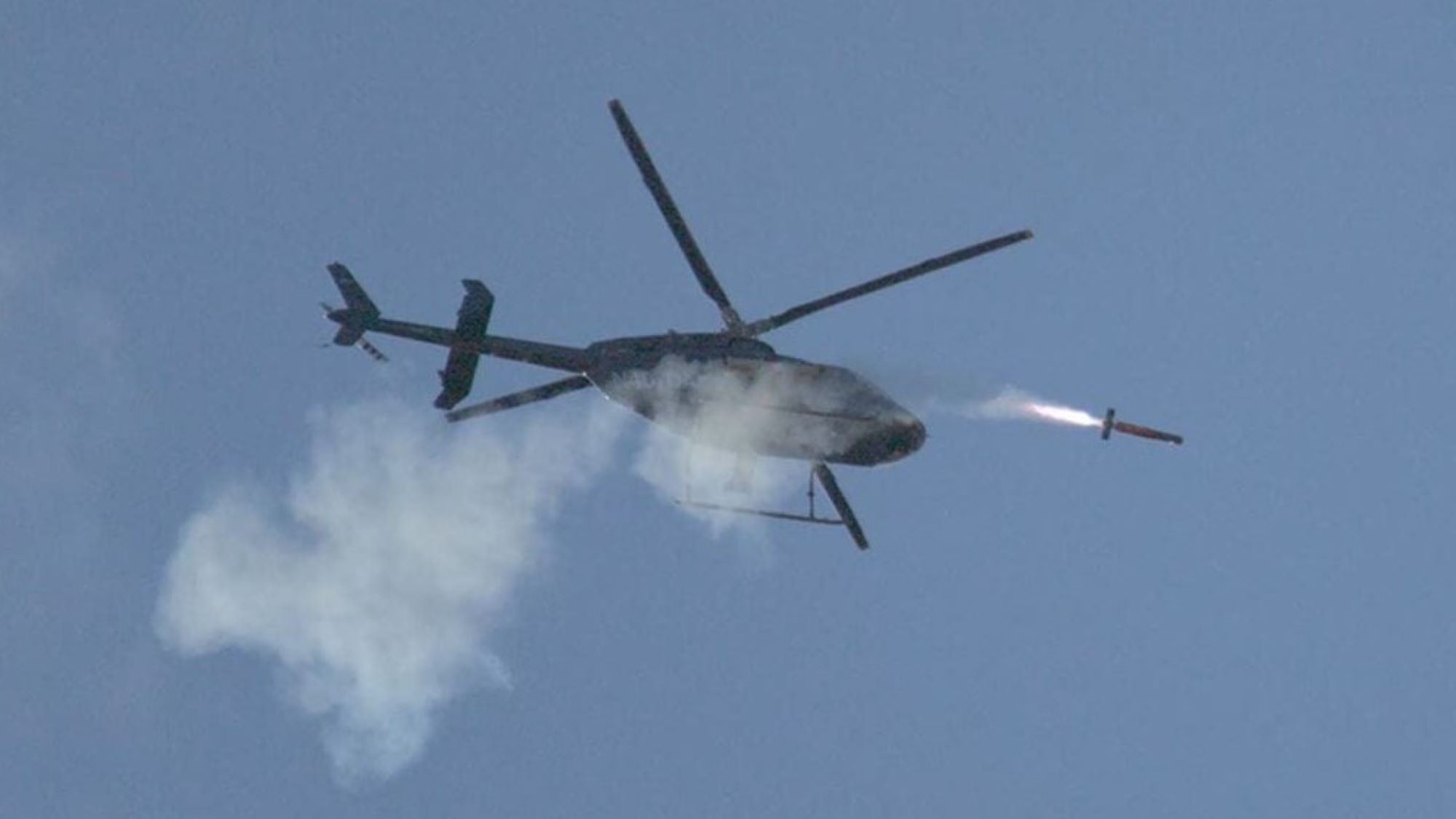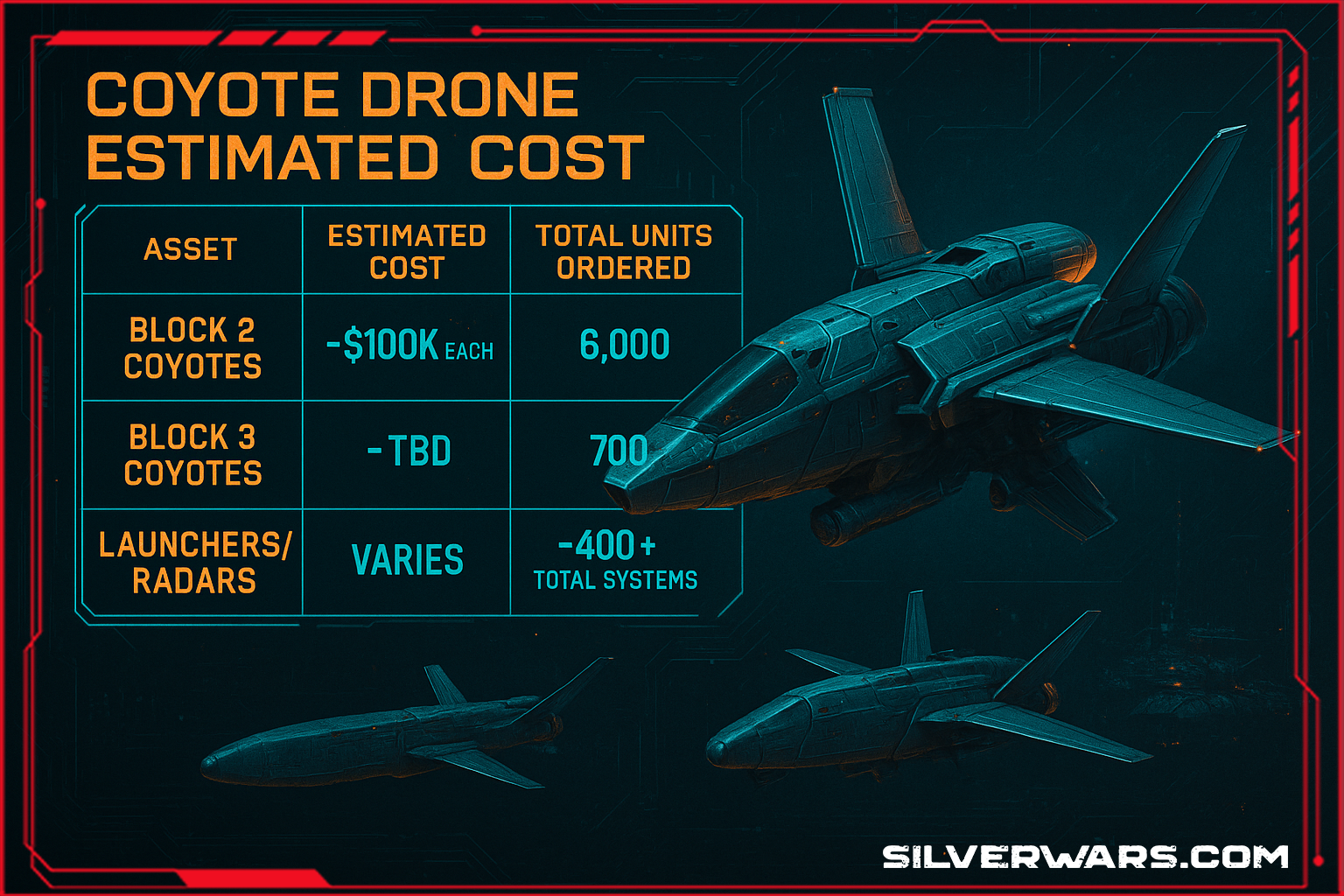A missile screams in from 200 miles out. You’re sitting behind a radar console, and in seconds the display lights up—not one contact, but dozens. They’re all independently maneuvering, all heading straight for you. This is what happens when a next-gen hypersonic mothership missile launches a swarm of drones mid-flight. And no, this isn’t a tech demo or sci-fi dream—it’s real, and the U.S. Army is already fielding it.
This is the Precision Strike Missile (PrSM) integrated with Coyote drones, a battlefield shock weapon that might do to conventional defenses what the internet did to bookstores. And buried underneath all that hardware, guidance software, and tactical buzz? Silver. A whole lot of silver.
PrSM: The Army's Ballistic Backbone Goes Modular
The U.S. Army’s PrSM is a solid-fueled, surface-to-surface short-range ballistic missile designed to replace the MGM-140 ATACMS. But don’t let the “short-range” tag fool you—this missile family is getting smarter, faster, and deadlier with every increment.

Each iteration isn't just an upgrade in explosive force or distance. They're building out a kill-web architecture. Inc 3, in particular, is where the game flips—it turns a single ballistic strike into a platform that can drop dozens of lethal drones into contested airspace.
Why Drone Swarms Change Everything
The U.S. has been testing missile-launched drone swarms capable of independent loitering, re-engagement, and coordinated autonomous targeting. These aren’t suicide drones—they're smart hunters.
The PrSM + Coyote combo allows for:
- Distributed lethality: One missile, many kills.
- Mid-course separation: Swarms released in-flight.
- Autonomous ops: No GPS, no network, just onboard AI.
- Multi-role payloads: Electronic warfare, ISR, decoy, kinetic.
Swarming Coyote drones can locate and destroy radar, communications nodes, and even intercept aircraft or missiles. A PrSM strike can now be the start of an operation, not just a singular impact.

What the Missile Actually Hit
In June 2024, the Army test-fired a PrSM that successfully sank the USS Cleveland in the Pacific—a retired Navy transport. More than a symbolic kill, it was proof that this missile isn’t just for land targets anymore. Then in December, the Army began user-led testing at White Sands Missile Range. Missiles were launched from HIMARS platforms without any Lockheed Martin assistance. The Army now owns the process end-to-end.
Precision Strike Missiles (PrSM) were employed alongside the Autonomous Multi-Domain Launcher (AML).
And they’re not slowing down. Over 3,986 PrSMs are slated for production, with 1,018 already under contract. The Army is all-in.
Coyote: The Drone That Grows Teeth
Raytheon’s Coyote drone started as a small expendable system used for weather tracking. But then the military got involved. It’s evolved into a modular, platform-agnostic weapon capable of everything from ISR to hard-kill intercepts.

Coyote Variants

Block 2 is the workhorse interceptor. Block 3 is the surgical tool with ISR and reusable capability. Both are now part of the Army’s swarm doctrine.

Where Silver Comes Into Play
Modern munitions run on high-performance materials, and silver is one of the irreplaceable ones:
- Electronics: Coyote drones use silver-based solder and conductive pastes.
- Guidance systems: PrSM’s multi-mode seekers rely on high-precision signal processing, loaded with silver contacts.
- Radar systems: KuRFS and missile guidance radars embed silver for heat-resistance and conductivity.
- Power systems: Rechargeable cells, comms gear, and tracking modules all burn silver to function.
Multiply that by thousands of drones and missiles. Now factor in battlefield redundancy. The silver drain is real.


Industrial Scaling: The Numbers Game
In 2023, the Army announced plans to acquire:
- 6,000 Coyote Block 2 interceptors
- 700 Coyote Block 3 ISR variants
- 252 fixed launchers
- 52 mobile launchers
- 118 fixed Ku-band radars
- 33 mobile radars
Each Coyote Block 2 drone runs about $100,000. Add the support equipment and radar integration, and you're easily in the billion-dollar club.

Let’s say each drone consumes a conservative 10g of silver in sensors, electronics, and wiring. That’s 67 kg of silver for Block 2s alone, not counting missile systems, radars, or auxiliary equipment.

The Mother of Death: Enter China’s Jiu Tian
While the U.S. fields Coyotes, China’s answer is the Jiu Tian, a flying mothership UAV revealed at the Zhuhai airshow and now undergoing its final test flights. This monster has a 25-meter wingspan, carries up to six tons of drones or munitions, and flies at altitudes above 50,000 feet.
MOTHER OF DEATH: Swarms of drones, including kamikaze UAVs, can be released from both sides of the aircraft's belly.
The Jiutian’s role? Same playbook:
- Launch kamikaze drone swarms from belly pods
- Perform ISR, electronic warfare, and decoy ops
- Hit targets while flying above medium-range air defense envelopes






Jiu Tian at the airshow in Zhuhai in south China’s Guangdong province.
With a range of 4,350 miles and loiter time up to 36 hours, Jiutian represents a massive leap in China’s drone doctrine. It’s designed by state-owned AVIC and built by Xian Chida Aircraft Parts Manufacturing. This thing can swarm targets across oceans.
It’s been positioned as a counterweight to U.S. Reaper-class systems—but its real use case is flooding Taiwan’s airspace with hundreds of autonomous hunters before troops or missiles even move.
If this escalates into a Taiwan flashpoint, drone swarm vs swarm will be one of the first plays on the battlefield. The race won’t be about tech—it’ll be about who can afford the most intelligent, silver-glutted expendables.
The Tactical Vision: Battlefield Autonomy
Imagine this:
- A PrSM Inc 3 launches from a HIMARS truck.
- At 100 miles out, it begins shedding Coyotes mid-flight.
- Coyotes fan out, each with a specific kill, recon, or jamming mission.
- They either strike, loiter, or confuse enemy defense systems.
This decentralizes firepower. It turns every missile into a mobile spawn point for combat AI. And the cost-per-target ratio becomes laughably efficient.

The Future Eats Silver
Swarm munitions are the next arms race. They’re cheap, effective, and overwhelming. When launched from a missile like PrSM, they make old-school defense paradigms obsolete.
And behind every drone wing, seeker head, and radar emitter? Silver. A lot of it.
This isn’t just an evolution in hardware. It’s an industrial campaign. Every time a missile screams into the sky, it takes silver with it. Every drone swarm launched is another shovel-load out of the global silver reserve.
And it’s only getting started. Silver remains critical to Nation Defense.






